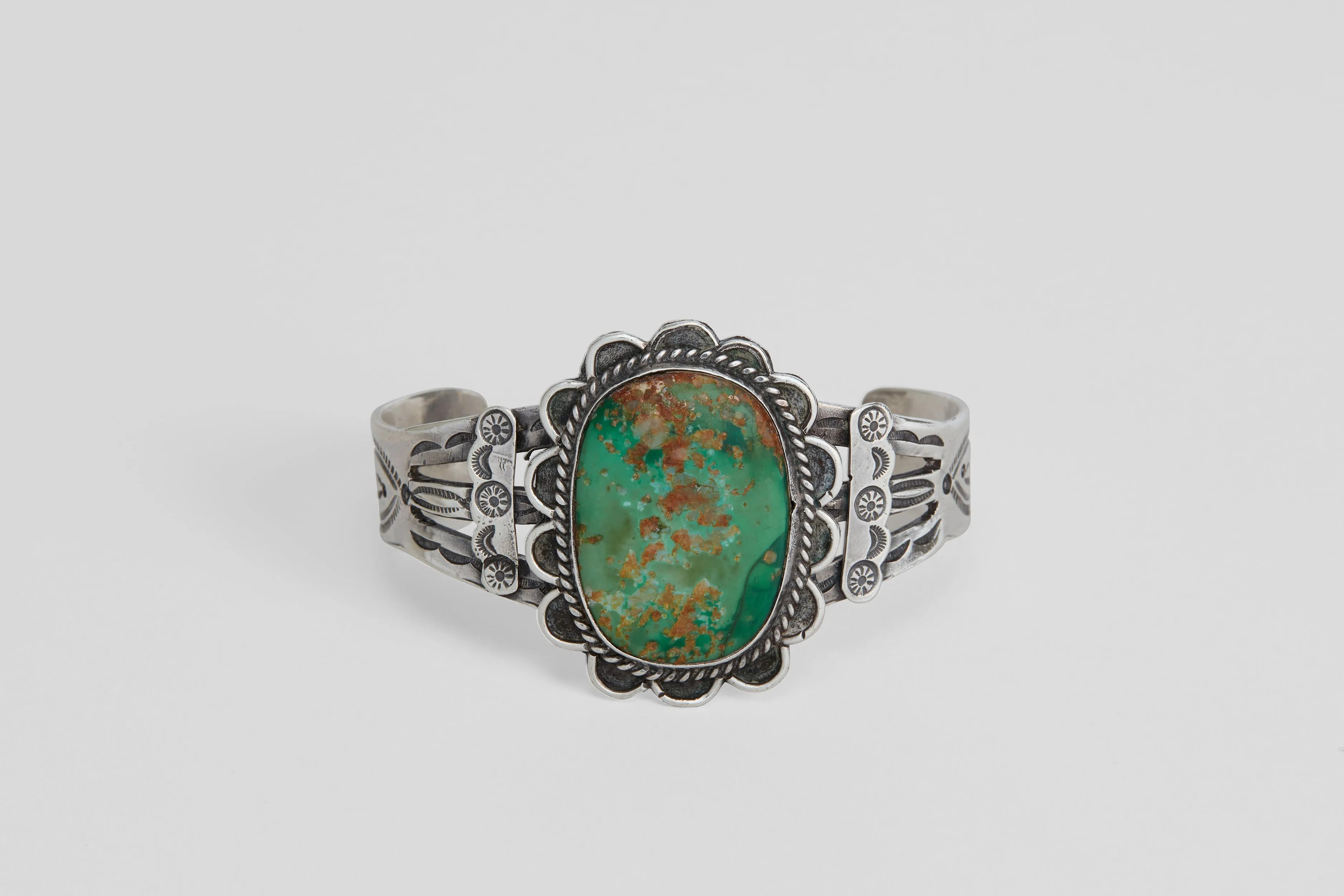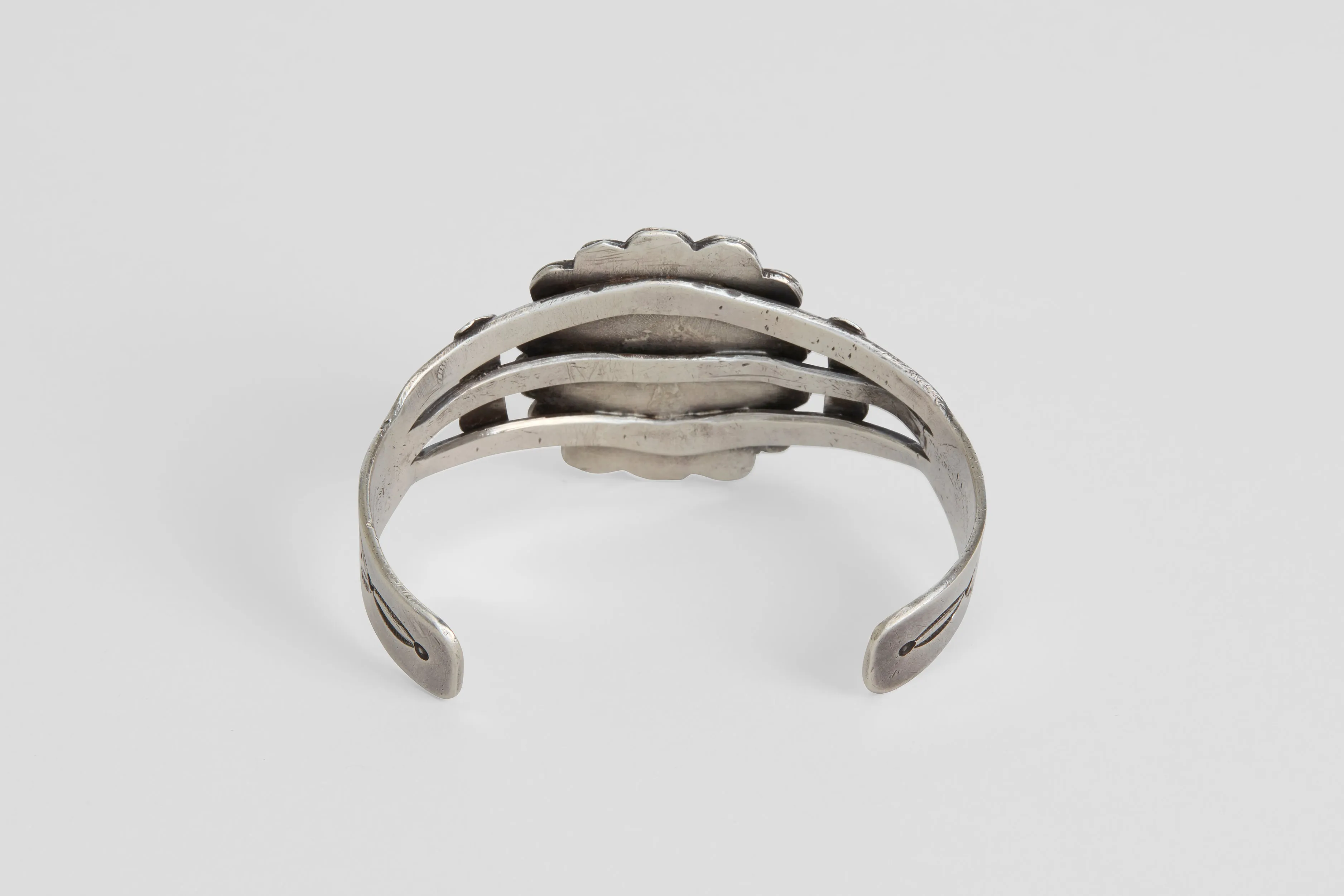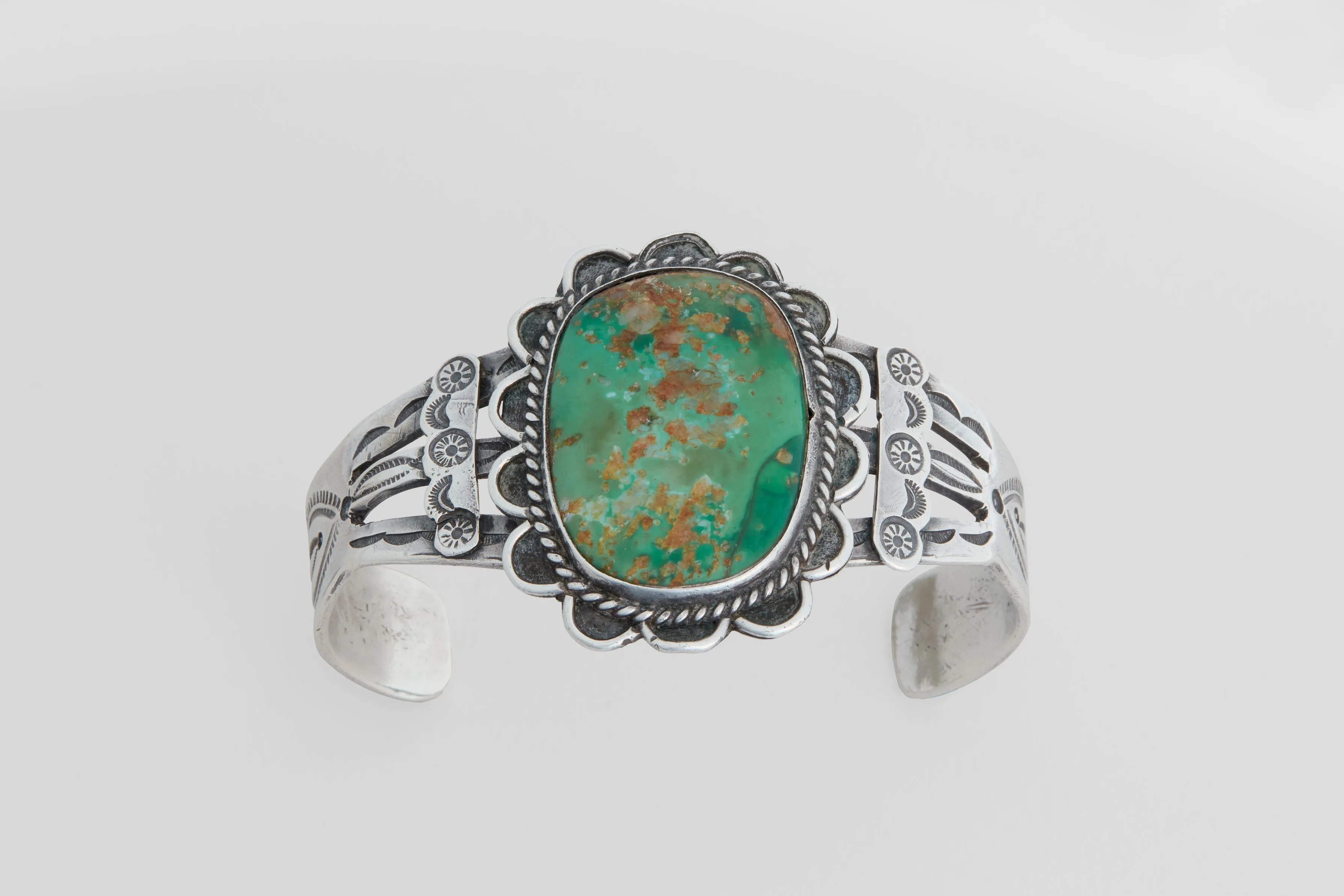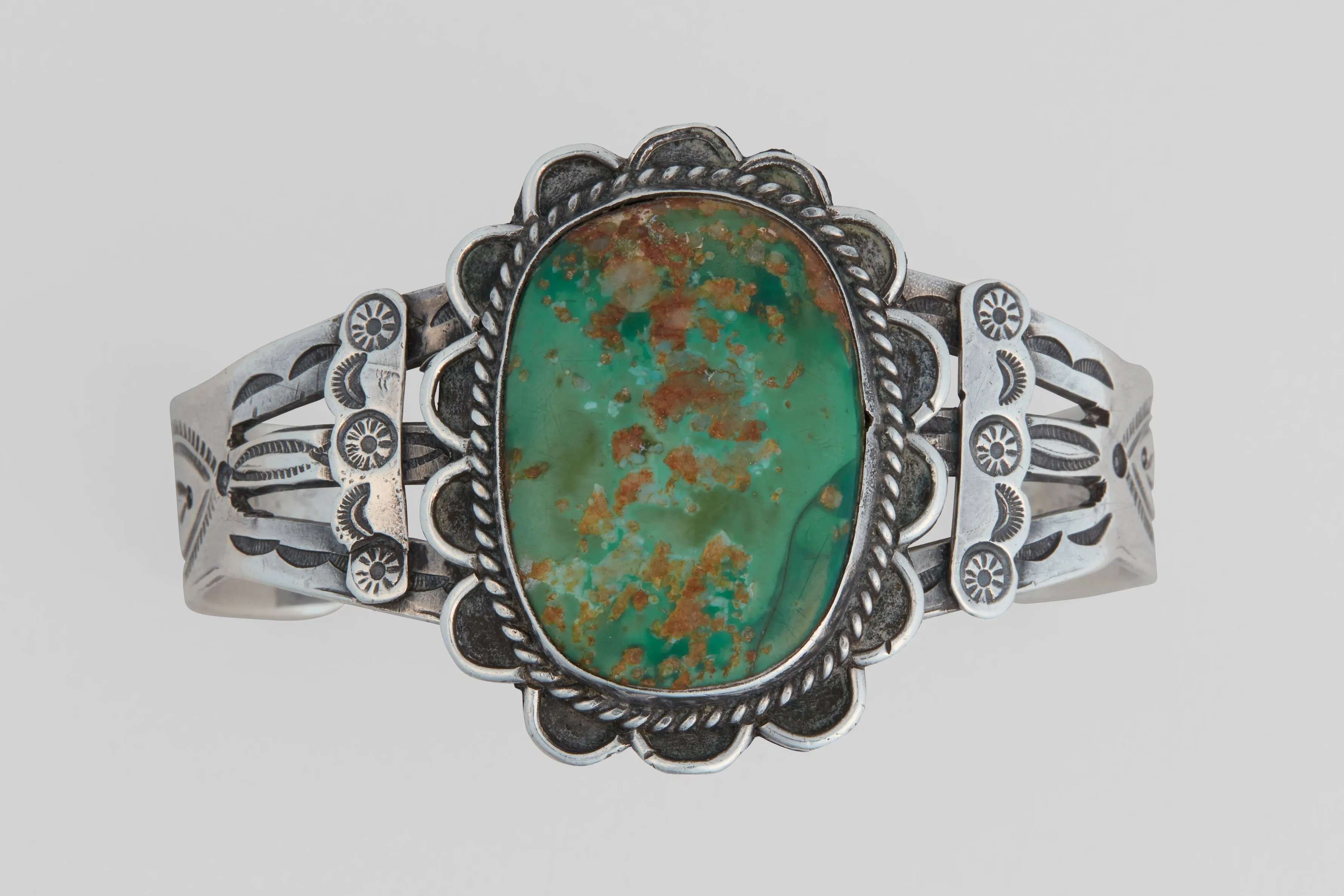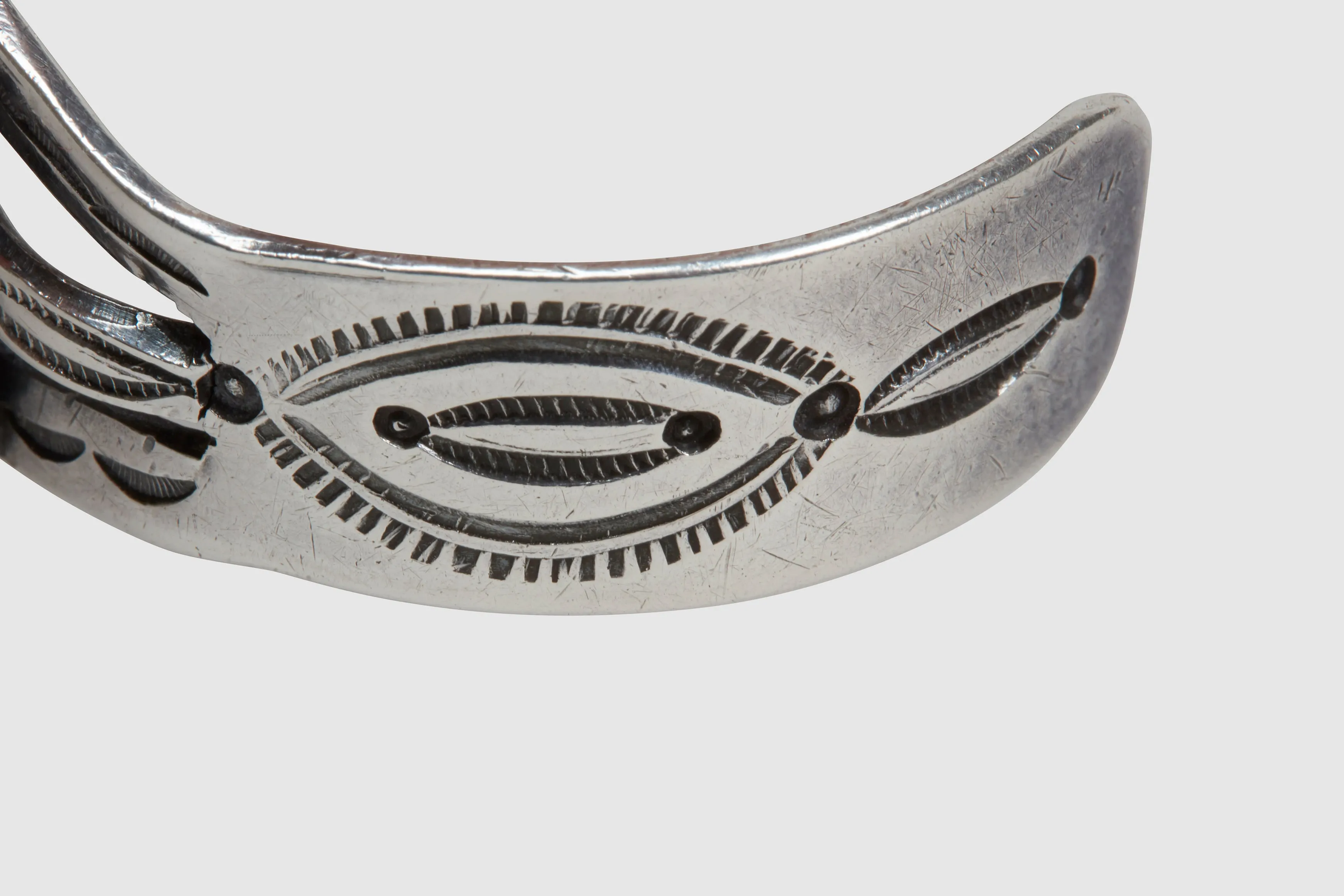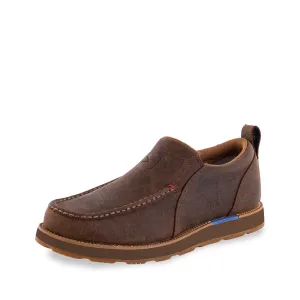A sterling silver and turquoise hand-made Native American cuff. This is one of the finest examples of Native American craftsmanship one is likely to come across in a cuff. The front of the cuff is set with a stunning center stone measuring nearly two inches in height, of green Manassa Green turquoise.
Manassa turquoise, also known as King's Manassa turquoise, is a type of turquoise that comes from the King's Manassa Turquoise Mine in Manassa, Colorado. The mine has been mined for centuries by Native Americans, and was rediscovered in 1890 by gold prospector Israel Perviose King. King originally thought the blue stains on the rocks were copper, but in 1900 they were identified as turquoise. He abandoned the mine after realizing there wasn't much gold, but a friend later asked about the stones and he realized they were valuable. The King family has operated the mine ever since, and the turquoise is sometimes called "Lick Skillet" after King and his descendants.
The mine produces a variety of colors and qualities, including deep emerald greens, deep sky-blues, and rich golden-brown matrices with some spider-webbing. Manassa turquoise is known for its striking green color and golden matrix, and is considered by some to be the best blue-green turquoise on the market. The turquoise grows in veins that run through the hard, golden brown host rock.
The mine has been closed for periods of time, and is currently not active, making Manassa turquoise rare on the market. However, the mine has recently changed hands and is once again producing turquoise.
The cuff is exceptionally well made with sand cast silver and hand stamped with no corners cut. The cuff tapers up from its ends as it nears the center stone. Before it meets the stone it splits into three to spread and support the large center stone. Atop these spread lines lies a decorative plate with stamped suns and sun rays on each side. The center stone is surrounded by a rubbed setting edge along with a hand braided wire frame which is then framed by a beautiful scalloped edge flower-like, larger setting frame.
The majority of the cuff is decorated with stamped patterns typical of the Navajo tribe artisan work. This level and attention to detail can only be explained by an artist who took a huge amount of pride in their work. The piece likely dates from the mid-part of the 20th Century, it is not signed.

